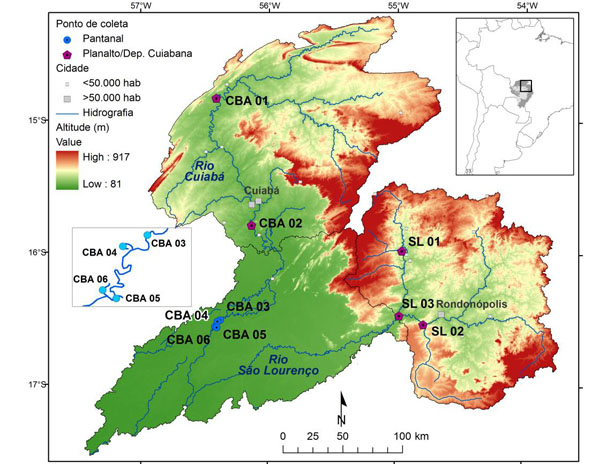Analysis of BTEX in water: comparison between two chromatographic columns
Keywords:
drinking water contamination, liquid-liquid micro-extraction
Abstract
This study aimed to implement and validate the GC-FID methodology to determine benzene, toluene, ethylbenzene and xylenes, or “BTEX,” as contamination indicators in drinking water. The methodology included four steps: the first was to adequately separate analytes from the matrix by comparing two different chromatography columns (SupelcowaxTM 10 e HP-5); the second step was the extraction of six compounds of (BTEX) using various types of solvents, extraction times and speeds; the third step statistically analyzed the resulting data; and the final step validated the methodology. Column SupelcowaxTM10 had better results in BTEX separation. The most effective recovery was achieved by using liquid-liquid micro-extraction with isooctane as solvent, which resulted in a recovery percentage of 57.8 to 89.8%. Linearity was observed for all compounds studied in the work range.
Published
21/03/2014
Issue
Section
Papers
Authors maintain the copyrights for their work. However, they grant rights of first publication to Ambiente e Agua - An Interdisciplinary Journal of Applied Science. In compensation, the journal can transfer the copyrights, allowing non-commercial use of the article including the right of sending the article to other data bases or publication media. The journal uses the CC BY 4.0 license"






